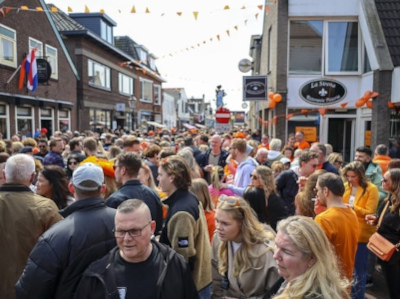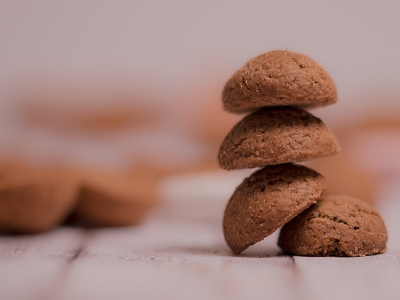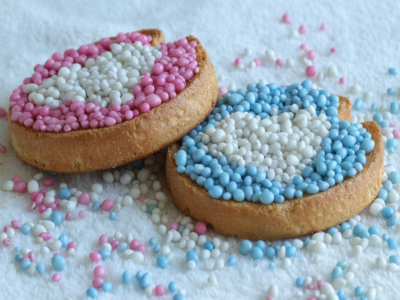Immerse yourself in the Dutch culture by exploring these five traditional traditions.
Celebration in honor of the reigning monarch.
On August 31st, 1885, the first Princess Day was celebrated in the Netherlands on the occasion of Princess Wilhelmina’s fifth birthday. This day was the precursor to Queen’s Day. After the death of King Willem III on November 23, 1890, Wilhelmina became Queen under the regency of her mother, Queen Emma. The first real Queen’s Day was celebrated in the Netherlands in 1891. Until 1948, Queen’s Day was celebrated on August 31. From 1949 to 2013, Queen’s Day was celebrated on April 30th, which was the birthday of Queen Juliana. When Queen Beatrix took over, she chose not to move the holiday to her birthday on January 31, unlike her predecessors. Since 2014, this holiday has been celebrated on April 27th, the birthday of King Willem Alexander. However, if King’s Day falls on a Sunday, it will be moved one day in advance. As of 2014, the name of the holiday changed to “King’s Day” for the first time.
On King’s Day, King Willem-Alexander, his family, and other members of the Royal Family visit a city in the Netherlands. The city and surrounding areas can then present themselves in a festive and characteristic way. This can be done, for example, with a parade, with musical performances, and with contributions from associations and organizations that are rooted in the city and region. In addition, the Royal Family meets the public along the route. Furthermore, the visit on King’s Day will be broadcast live on television.
This holiday is not only celebrated in the Netherlands but also in Curacao, Saint Martin, and Aruba.

https://pixabay.com/photos/crowd-street-south-lake-mayor-8020154/
Sinterklaas
Sinterklaas is a traditional children’s celebration that is celebrated on December 5th. It begins in November when Sinterklaas arrives from Spain on his steamboat called ‘Pakjesboot 13’ along with his helpers known as ‘Zwarte Pieten’ or Black Petes. There are hundreds of people standing along the sides, watching Sinterklaas arrive. This parade is also broadcast on television. Sinterklaas and zwarte piet bring numerous presents for children who behave well throughout the year. If a child has not behaved well, Sinterklaas will put the child in his sack and take the child with him back to Spain.
Leading up to December 5th, children place their shoes near the chimney, sing songs, and leave food for Amerigo, Sinterklaas’ horse. If they are fortunate, Sinterklaas will pay a visit and surprise them with presents in their shoes, usually candy. There is specific candy especially made for this holiday, such as a chocolate letter and pepernoten. However, the children never catch a glimpse of Sinterklaas himself, as he remains on the roof with Amerigo and Zwarte Piet. It is Zwarte Piet’s responsibility to descend the chimney and ensure that the correct present is placed in the right shoe.
This holiday is not only celebrated at home but also in school. At school, each pupil fills out a questionnaire, where they fill out what they like and what presents they like. These sheets of paper are folded and put into a bowl. Then, each pupil will draw the name of another pupil. They have to make a surprise and write a poem for the pupil they drew. The surprise is filled with presents. Additionally, the children have a budget of 5 euros for the presents.
On December 5th, Sinterklaas visits numerous children in their homes. The children have the opportunity to express their gratitude, often through song, to Sinterklaas and Zwarte Piet, and in return, they receive a generous amount of candy and additional presents. On December 6th, Sinterklaas returns to Spain.

https://pixabay.com/photos/saint-nicholas-saint-peppernuts-2793722/
Carnaval
Carnaval is a Catholic celebration that happens before Easter. It used to mark the start of Lent, a period of fasting before Easter. Nowadays, it has become less religious, but it still holds significance. Carnaval is celebrated in the southern regions, where Catholic traditions are stronger. The Dutch carnaval combines Dutch customs with influences from Italy, France, and Germany. During the three-day festival, people wear costumes, cities change their names temporarily, a Prince of Carnival is chosen, and everyone takes a break from daily life to party. The Carnival Parade is the main event, where large floats organized by local carnival associations mock authorities and social norms. During the parade, the people on the floats throw candy to the people standing on the sides.
Beschuit met muisjes
When you visit a new mother, you can expect to be served beschuit met muisjes (rusk with mice). This is a long-standing Dutch tradition to celebrate the birth of a baby.
These treats are given to friends and family who come to visit and congratulate the new parents on their newborn. The rusk is topped with pink or blue mice, with pink representing a baby girl and blue a baby boy.
It is a special and typically Dutch tradition that didn’t just come out of nowhere. The muisjes are made from anise seeds, which were already given to new mothers at the end of the Middle Ages. Anise helps stimulate the production of breast milk. At that time, it was essential because there were hardly any alternatives if the breast milk didn’t come in properly. From the 18th century on, anise seeds were not only eaten by the mother but also by visitors to the maternity ward. A century later, the beschuit (rusk) was added, and from the second half of the 19th century on, the muisjes were made in blue, pink, and white.
There are different stories about why anise seeds are called “mice.” One says it’s because the stem sticks out of the seed like a mouse. Another says it represents fertility because mice can reproduce quickly.
However, it wasn’t until the birth of Princess Beatrix in 1938 that “beschuit met muisjes” (rusk with mice) gained national fame. A large tin of orange birth mice was presented at Soestdijk Palace as part of a major publicity stunt. It was a huge success. Since then, we have all spread a layer of butter on a rusk and sprinkled it with mice.

https://pixabay.com/photos/geboorteaankondiging-rusk-with-mice-4673396/
New year
In Dutch, New Year’s Eve is actually referred to as Oudejaarsavond, which translates to “old year’s eve.” In the Netherlands, New Year’s Eve is celebrated in a grand manner, with an abundance of fireworks. However, the festivities can become quite intense and can result in fires, vandalism, and, unfortunately, riots.
Fireworks play a significant role in ending the year with a bang in the Netherlands. The Dutch people take New Year’s Eve seriously, and fireworks are a crucial aspect of creating the festive atmosphere. It is important to note that the rules and regulations regarding fireworks in the Netherlands are stringent, and they may vary from one Dutch city to another. Generally, only trained individuals are permitted to ignite fireworks, with the exception of New Year’s Eve. During the period between 6 p.m. on December 31st and 2 a.m. on January 1st, anyone, regardless of their expertise, is allowed to engage in fireworks activities. Additionally, there are designated stores where fireworks can be purchased by the public from December 29th to 31st, in an effort to regulate the sale of potentially hazardous items. Certain types of fireworks, such as single shots, category F3, firecrackers, and rockets, are completely prohibited. As for fireworks shows, the Netherlands offers a variety of options.
During New Year’s Eve, Dutch people like to consume oliebollen, which are delicious deep-fried buns covered in powdered sugar. This is a beloved Dutch tradition for New Year’s. However, it is important to note that they are specifically meant to be enjoyed on New Year’s, and some Dutch people may not approve if you have them too early in the year.
Another popular Dutch New Year’s tradition is the Oudejaarsconference, a comedy cabaret show that is broadcasted on New Year’s Eve. It is a humorous look back on the past year, hosted by one or more comedians, and has been a long-standing tradition in Dutch New Year’s entertainment.
Sources:
https://www.koninklijkhuis.nl/onderwerpen/koningsdag/geschiedenis-koningsdag
http://www.overzicht-feestdagen.nl/feestdagen/Koninginnedag.html
https://www.koninklijkhuis.nl/onderwerpen/koningsdag
https://www.utoday.nl/what-the-bleep-is/59353/What_the_bleep_is_Sinterklaas__Zwarte_Piet
https://www.visitzuidlimburg.nl/te-doen-in-zuid-limburg/carnaval/
https://www.kraamzorgzeeland.nl/contact/nieuws/waarom-we-beschuit-met-muisjes-eten-bij-een-geboorte-en-alleen-in-nederland
https://dutchreview.com/culture/new-years-eve-traditions-netherlands/
